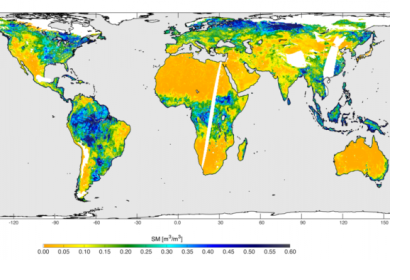NASA's new Soil Moisture Active Passive (SMAP) mission has begun science operations. SMAP investigates global soil moisture and detect whether soils are frozen or thawed. This information help scientist understand links among Earth’s water, energy and carbon cycles. In addition, map global soil moisture can help to monitor and predict natural hazards like floods and droughts.
"Fourteen years after the concept for a NASA mission to map global soil moisture was first proposed, SMAP now has formally transitioned to routine science operations," said Kent Kellogg, SMAP project manager at Jet Propulsion Laboratory (JPL). "SMAP's science team can now begin the important task of calibrating the observatory's science data products to ensure SMAP is meeting its requirements for measurement accuracy."
SMAP was launched on 31 January this year to orbit. Together, SMAP's two instruments, which share a common antenna, produce the highest-resolution, most accurate soil moisture maps ever obtained from space. The spacecraft’s radar transmits microwave pulses to the ground and measures the strength of the signals that bounce back from Earth, whereas its radiometer measures microwaves that are naturally emitted from Earth’s surface, explains the NASA article.
"SMAP data will eventually reveal how soil moisture conditions are changing over time in response to climate and how this impacts regional water availability,” said Dara Entekhabi, SMAP science team leader at the Massachusetts Institute of Technology in Cambridge. “SMAP data will be combined with data from other missions like NASA's Global Precipitation Measurement, Aquarius and Gravity Recovery and Climate Experiment to reveal deeper insights into how the water cycle is evolving at global and regional scales."

